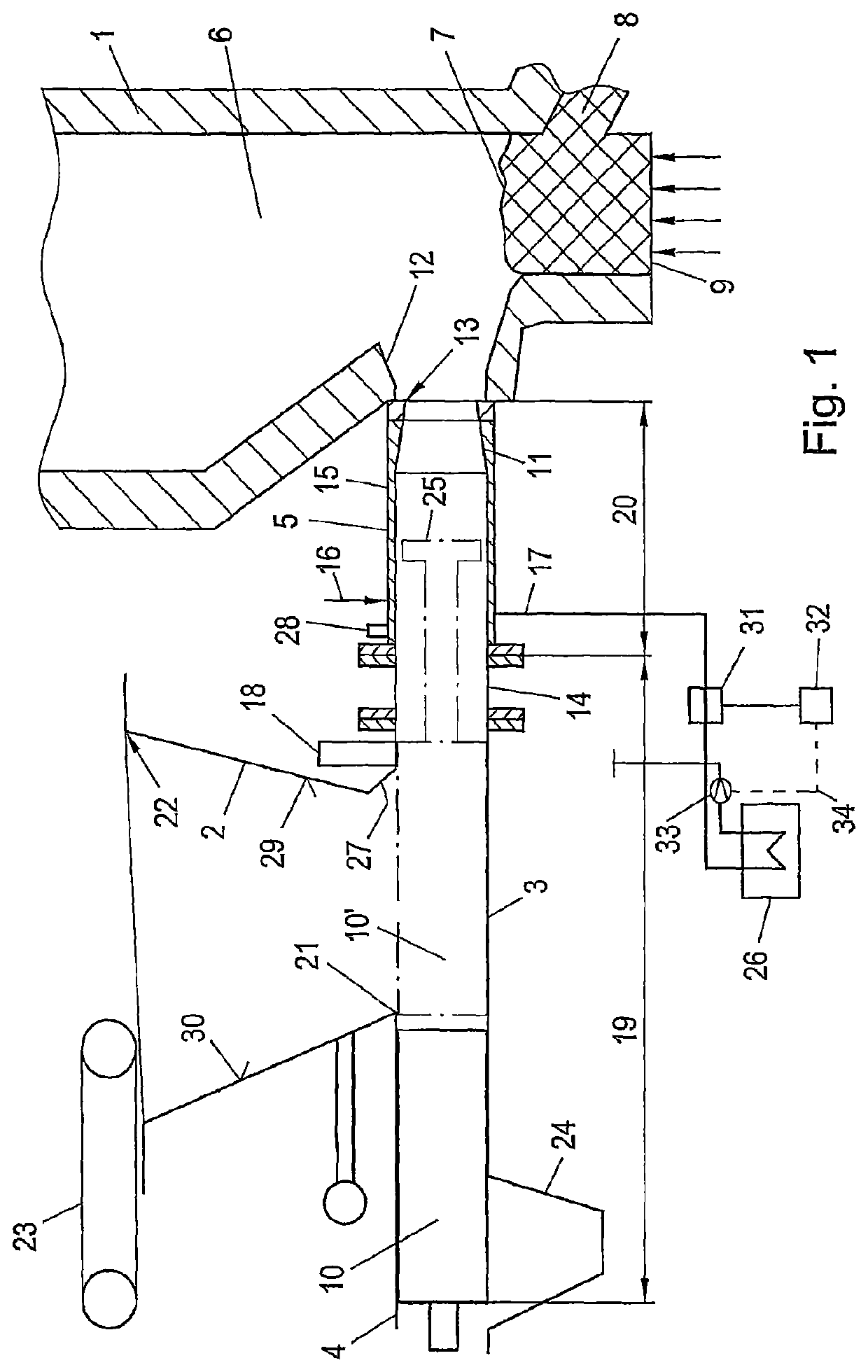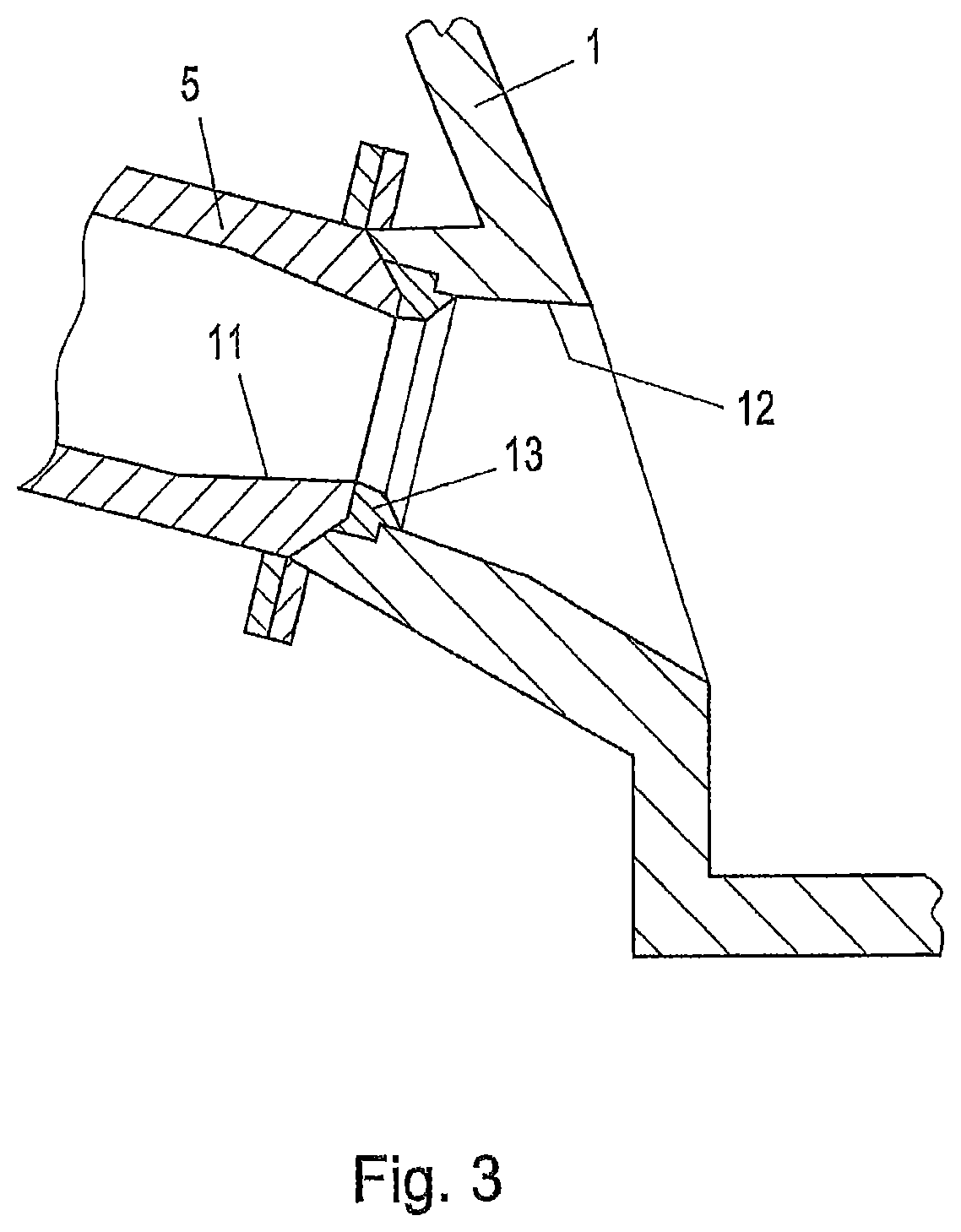Device for conveying fuels into a gasification reactor
a gasification reactor and fuel technology, applied in the direction of combustible gas production, lighting and heating apparatus, combustion types, etc., can solve the problems of screw conveyors that are difficult to cool, screw conveyors are susceptible to breakdown, and the air is difficult to be properly excluded
- Summary
- Abstract
- Description
- Claims
- Application Information
AI Technical Summary
Benefits of technology
Problems solved by technology
Method used
Image
Examples
Embodiment Construction
[0033]In FIG. 1, the gasification reactor 1 is in particular a reactor such as that described in AT 405937 B.
[0034]The gasification reactor 1 comprises a gasification zone 6 for accommodating a stationary bed 7 and a combustion zone (not shown in the drawing) to accommodate a fluidized bed. The gasification reactor 1 and the combustion zone (not shown in the drawing) are interconnected in the lower region via a sluice-like apparatus 8, wherein the gasification zone comprises a gas exhaust (not shown in the drawing) and a nozzle bottom 9, in particular for the injection of steam or CO2.
[0035]The mechanical conveying device 4 comprises a hydraulically drivable plunger 10 displaceably guided in a first cylindrical section 19 of the conveying pipe 3. The plunger 10 can be moved to and fro between the withdrawn position shown in the drawing with numeral 10 and the forward position shown with numeral 10′. Furthermore, the second axial section 20 of the conveying pipe 3 comprises an intern...
PUM
| Property | Measurement | Unit |
|---|---|---|
| temperature | aaaaa | aaaaa |
| temperatures | aaaaa | aaaaa |
| temperature | aaaaa | aaaaa |
Abstract
Description
Claims
Application Information
 Login to View More
Login to View More - R&D
- Intellectual Property
- Life Sciences
- Materials
- Tech Scout
- Unparalleled Data Quality
- Higher Quality Content
- 60% Fewer Hallucinations
Browse by: Latest US Patents, China's latest patents, Technical Efficacy Thesaurus, Application Domain, Technology Topic, Popular Technical Reports.
© 2025 PatSnap. All rights reserved.Legal|Privacy policy|Modern Slavery Act Transparency Statement|Sitemap|About US| Contact US: help@patsnap.com



